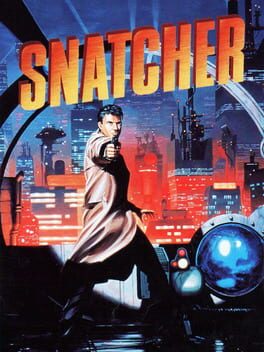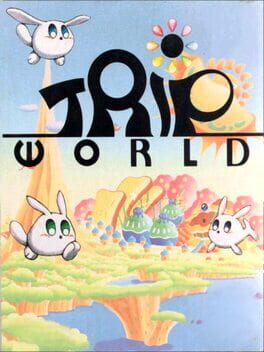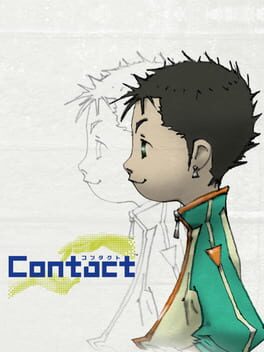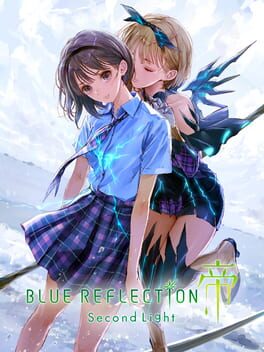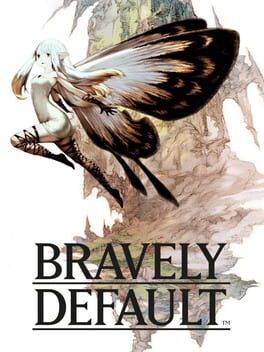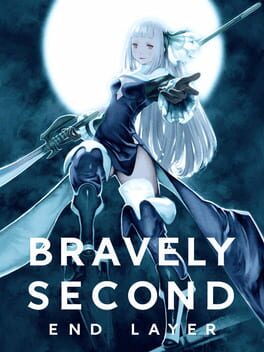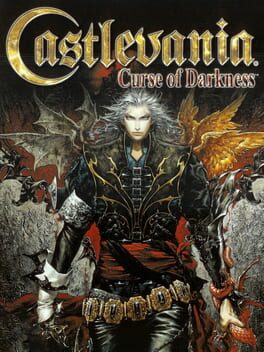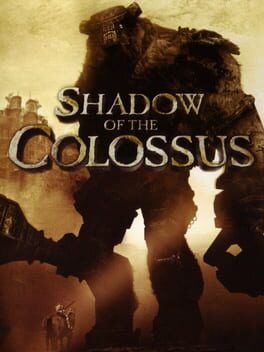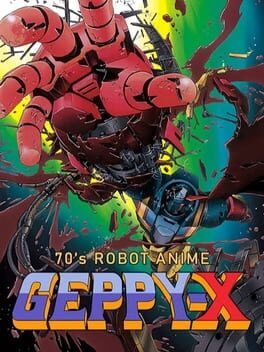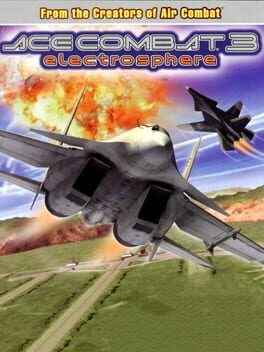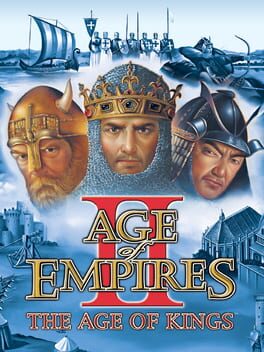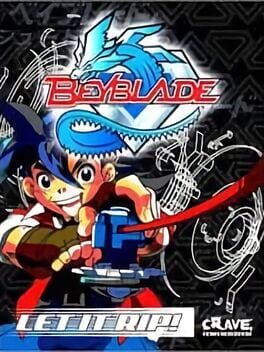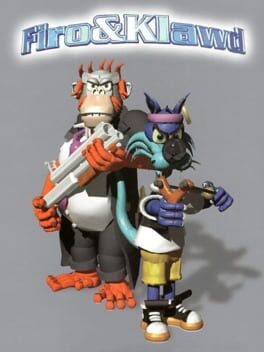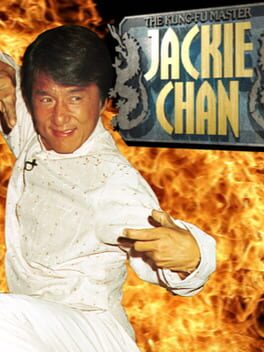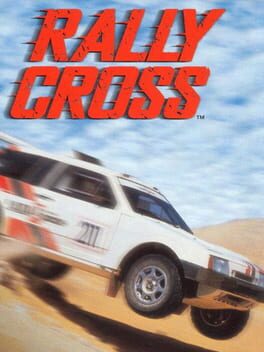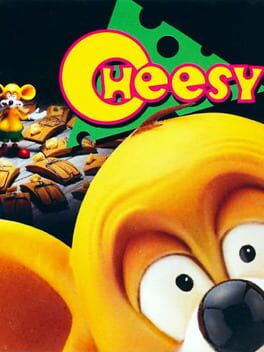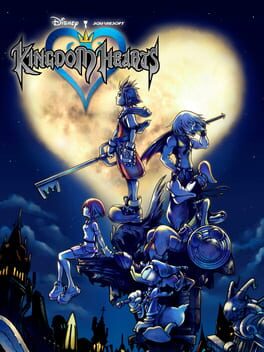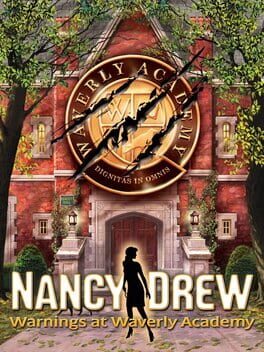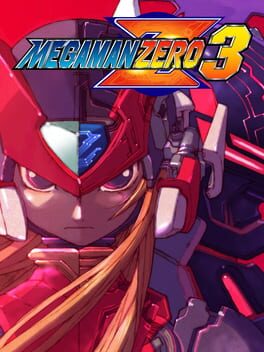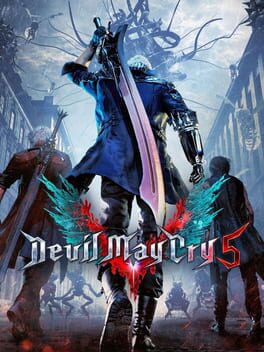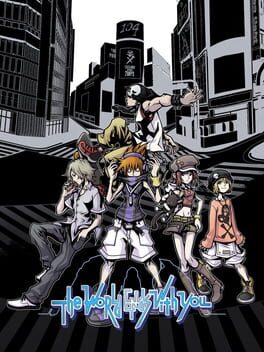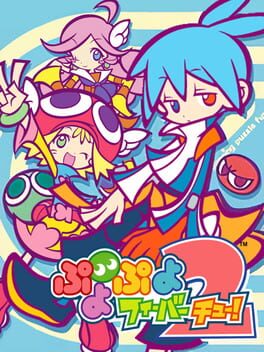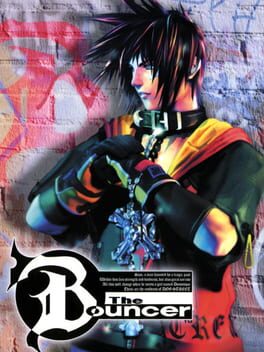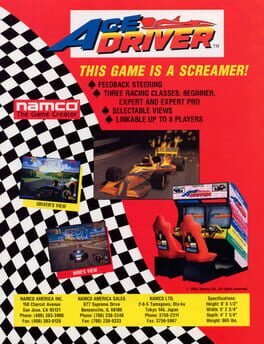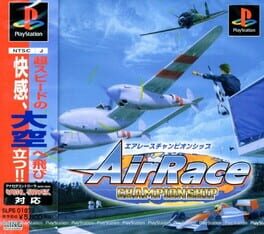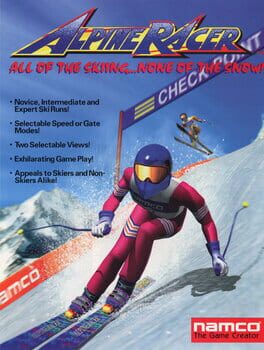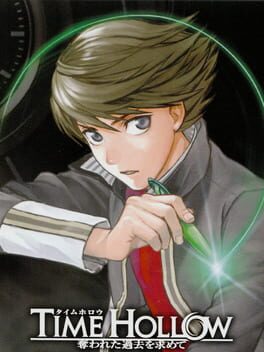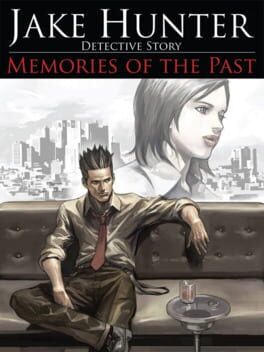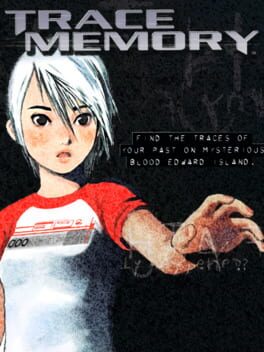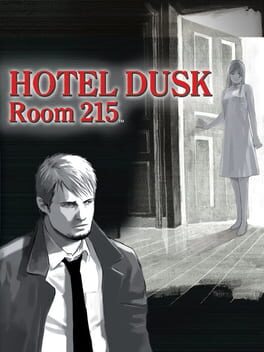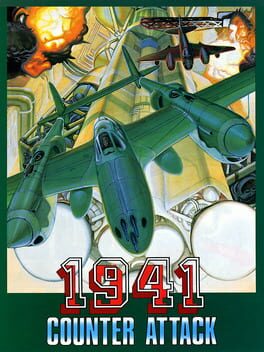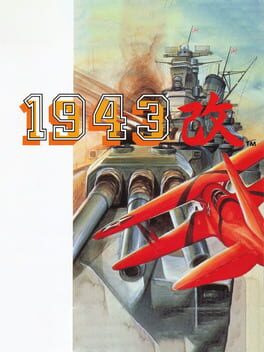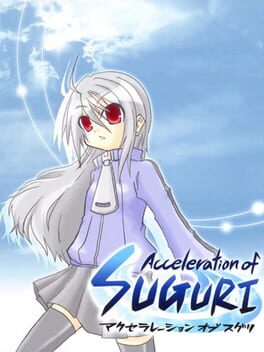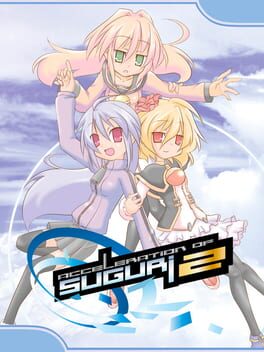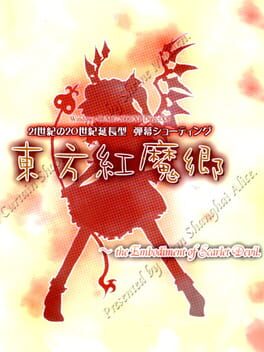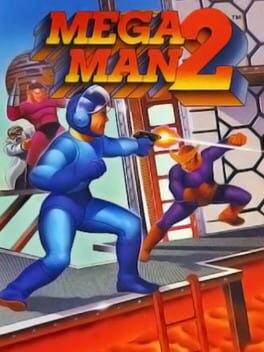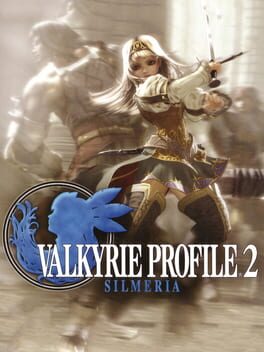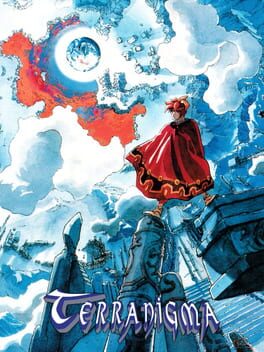Millionull
119 reviews liked by Millionull
Snatcher
1992
It's surprising to me that this really quite excellent cyberpunk-noir title sold so poorly outside of Japan, but I think there were two factors behind this: its potent cocktail of gore, violence, and mature themes significantly reduced the demographic of gamers who would buy it, and it seemingly is one of the first (if not the first) visual novels to be released outside of Japan, into a playerbase that is more accustomed to point-and-click adventure games.
In a way, my initial experience with this game probably mirrored that of the West in general - this might be my first visual novel, and I was baffled at first by the linearity, the lack of difficulty, and the lack of... gameplay, really. But I warmed up to it quickly enough - the genre's laserlike focus on telling a story made the experience like reading a book but with extra interactivity, and the ability to take things at my own pace. Gillian Seed, who was investigating the menace of the Snatchers (humanoid robots who kill people and take their place), could either be played as a no-nonsense straight-laced agent, or a talented goof-off who flirts with anything that moves and drinks booze on the government's dime, or anything in-between. With each new area and next stage of the investigation, I could either rush through with urgency or spend time interacting with everything and soaking up the impressive tapestry of lore, and I enjoyed the freedom that this genre afforded me. And, of course, Hideo Kojima being Hideo Kojima, the game made very clever use of the medium to pull of some clever tricks that books can't; in a very early example of this, your companion hears a faint noise and rather than outright telling you what it is, prompts you to turn the volume up so you can hear it yourself.
Of course, an interactive book is only any good if the story itself is good, and Snatcher definitely delivers on that! A lot of the plot elements seem derivative, especially today, but that doesn't take away from how well-crafted the world is, how cool some of the plot twists are, and how this story about synthetic life forms replacing people contains a heart and humanity that I associate with Kojima's best works. The pacing and storytelling is generally good too, though it suffers slightly from a need to over-recap key plot points, and several jumpscares or genuinely tense moments lose some of that thrill due to being overly-telegraphed.
This is an easy recommend to anyone - a patchwork of cinematic influences and inspirations that contains the seeds of Kojima's later work, easy enough to play to completion, both streamlined and compelling enough to never wear out its welcome.
In a way, my initial experience with this game probably mirrored that of the West in general - this might be my first visual novel, and I was baffled at first by the linearity, the lack of difficulty, and the lack of... gameplay, really. But I warmed up to it quickly enough - the genre's laserlike focus on telling a story made the experience like reading a book but with extra interactivity, and the ability to take things at my own pace. Gillian Seed, who was investigating the menace of the Snatchers (humanoid robots who kill people and take their place), could either be played as a no-nonsense straight-laced agent, or a talented goof-off who flirts with anything that moves and drinks booze on the government's dime, or anything in-between. With each new area and next stage of the investigation, I could either rush through with urgency or spend time interacting with everything and soaking up the impressive tapestry of lore, and I enjoyed the freedom that this genre afforded me. And, of course, Hideo Kojima being Hideo Kojima, the game made very clever use of the medium to pull of some clever tricks that books can't; in a very early example of this, your companion hears a faint noise and rather than outright telling you what it is, prompts you to turn the volume up so you can hear it yourself.
Of course, an interactive book is only any good if the story itself is good, and Snatcher definitely delivers on that! A lot of the plot elements seem derivative, especially today, but that doesn't take away from how well-crafted the world is, how cool some of the plot twists are, and how this story about synthetic life forms replacing people contains a heart and humanity that I associate with Kojima's best works. The pacing and storytelling is generally good too, though it suffers slightly from a need to over-recap key plot points, and several jumpscares or genuinely tense moments lose some of that thrill due to being overly-telegraphed.
This is an easy recommend to anyone - a patchwork of cinematic influences and inspirations that contains the seeds of Kojima's later work, easy enough to play to completion, both streamlined and compelling enough to never wear out its welcome.
Trip World
1992
Something this singularly focused and confident in what it’s setting out to achieve goes beyond a breath of fresh air and into the realm of interactive mouthwash. Nearly everything about Penny’s game encourages you to stay on the move at all times – it’s present in how the secret areas’ entryways outright throw you in or out, its main enemy type’s mode of attack being chasing you, her bouncy bunny-like outfit and the combo system rewarding you for every trick you pull, and it knows what a joy it is to do so to the point that its main collectibles reward with you with progressively zanier layouts to test your mastery of it in.
It all hinges on building and maintaining momentum, so it’s just as well that her toolkit feeds into both so intuitively. Comparisons to different platformers in this respect are easy – I got enough mileage out of her drop dash equivalent that I occasionally forgot she also has a spin dash one – but viewing this game through the lens of others is selling it short when her yo-yo swing’s the type of thing which makes returning to them initially feel weird for the lack of it. It’s so malleable it’s unreal: an on-demand boost whose strength’s proportional to her speed going into it, contextualised into her design, which can mantle up ledges or grab special items or correct jumps, all dependent on the angle at which you let go and the nearby geometry. Rarely will any two attempts at the same section of a level pan out the same way because of it alone, and that’s without delving into how fluidly almost all of her other manoeuvres interweave with it and what a complementary fit they are for stages so littered with half-pipes and slopes. By no means am I a capital P Penny gamer as of yet, but hopefully this shows what I mean to some degree.
I say “almost” for the same reason as the “nearly” at the start, because although it’s a resounding success at funnelling you into a flow state the vast majority of the time, one or two common interactions stand out as uncharacteristically finicky. The window for maintaining a combo when transitioning from a yo-yo swing into spinning on top of screws feels excessively strict, slightly marring how much I’m predisposed to love any control scheme which even vaguely reminds me of Ape Escape, while obstacles which require Penny to come to a stop (like tree catapults or giant drawers) seem incongruent with how you otherwise pretty much always want to be moving. I’m hesitant to criticise these aspects too much because all manner of unconventional games, not just skill-intensive ones like Penny’s, suffer too often from players’ tendencies to blame them for their own lack of willingness to meet them on their own terms, and knowing that levels can be beat in a single combo makes me think the relative discomfort of these moments is my own fault. Occasional collision issues and/or clipping through terrain are more unambiguously annoying, but in any case, stuff like this is only so conspicuous because everything else about how it plays is so bang on.
That’s similarly true of its levels themselves. While it’s a bit of a pity that the amount of levels per area vary so steeply – Industria and Tideswell, my two favourites in part for the Dynamite-Headdy-if-he-real visuals and being yet further evidence for why Tee Lopes should be made to compose every game ever, only have two levels each – any pacing issues this could’ve potentially resulted in are offset by what a smooth difficulty curve they result in when taken wholistically. The progression from early hazards like water, which can be manipulated to the player’s advantage via the point bonuses it offers by riding on top of it with enough speed, to the absolutely no-touchy electrical discharges powered by breakable lightbulbs in later areas creates this lovely feeling of the game taking its gloves off just as you’ve become acclimatised enough with its systems to no longer need the help. I initially found it frustrating that hazards like the latter hurt Penny if her yo-yo collides with them, but after sitting on it, I can now see that it’s just another example of what a unique platformer this is – substantially extending her hurtbox whenever you perform a trick causes you to really consider when and where to do so in a way that many others don’t really demand of you.
It's evocative of a larger point, which is that Penny’s Big Breakaway is the type of game we could all do with more of. It’s one that’s not afraid to be so out-there in both mechanics and visual design to the point of potentially being offputting for some. It’s one which tangibly takes enough inspiration from the like of Sonic or Mario Odyssey to feel immediately familiar on some level, yet also puts equally as much of its own spin on areas in which it shares common ground with bigger names to the extent that you can’t treat it like them. It’s one that’s in general so unabashedly itself that you can’t not respect it regardless of whether or not it’s to your personal taste, but if you’re at all into the kind of game which gives out as much as you put in and only becomes better as you yourself do, there’s too much on offer here executed to too high of a standard for it not to be.
To extend to it the highest praise in a more succinct way: in art direction, ethos and gameplay philosophy, this is essentially a fully 3D Mega Drive game. Breakaway indeed.
It all hinges on building and maintaining momentum, so it’s just as well that her toolkit feeds into both so intuitively. Comparisons to different platformers in this respect are easy – I got enough mileage out of her drop dash equivalent that I occasionally forgot she also has a spin dash one – but viewing this game through the lens of others is selling it short when her yo-yo swing’s the type of thing which makes returning to them initially feel weird for the lack of it. It’s so malleable it’s unreal: an on-demand boost whose strength’s proportional to her speed going into it, contextualised into her design, which can mantle up ledges or grab special items or correct jumps, all dependent on the angle at which you let go and the nearby geometry. Rarely will any two attempts at the same section of a level pan out the same way because of it alone, and that’s without delving into how fluidly almost all of her other manoeuvres interweave with it and what a complementary fit they are for stages so littered with half-pipes and slopes. By no means am I a capital P Penny gamer as of yet, but hopefully this shows what I mean to some degree.
I say “almost” for the same reason as the “nearly” at the start, because although it’s a resounding success at funnelling you into a flow state the vast majority of the time, one or two common interactions stand out as uncharacteristically finicky. The window for maintaining a combo when transitioning from a yo-yo swing into spinning on top of screws feels excessively strict, slightly marring how much I’m predisposed to love any control scheme which even vaguely reminds me of Ape Escape, while obstacles which require Penny to come to a stop (like tree catapults or giant drawers) seem incongruent with how you otherwise pretty much always want to be moving. I’m hesitant to criticise these aspects too much because all manner of unconventional games, not just skill-intensive ones like Penny’s, suffer too often from players’ tendencies to blame them for their own lack of willingness to meet them on their own terms, and knowing that levels can be beat in a single combo makes me think the relative discomfort of these moments is my own fault. Occasional collision issues and/or clipping through terrain are more unambiguously annoying, but in any case, stuff like this is only so conspicuous because everything else about how it plays is so bang on.
That’s similarly true of its levels themselves. While it’s a bit of a pity that the amount of levels per area vary so steeply – Industria and Tideswell, my two favourites in part for the Dynamite-Headdy-if-he-real visuals and being yet further evidence for why Tee Lopes should be made to compose every game ever, only have two levels each – any pacing issues this could’ve potentially resulted in are offset by what a smooth difficulty curve they result in when taken wholistically. The progression from early hazards like water, which can be manipulated to the player’s advantage via the point bonuses it offers by riding on top of it with enough speed, to the absolutely no-touchy electrical discharges powered by breakable lightbulbs in later areas creates this lovely feeling of the game taking its gloves off just as you’ve become acclimatised enough with its systems to no longer need the help. I initially found it frustrating that hazards like the latter hurt Penny if her yo-yo collides with them, but after sitting on it, I can now see that it’s just another example of what a unique platformer this is – substantially extending her hurtbox whenever you perform a trick causes you to really consider when and where to do so in a way that many others don’t really demand of you.
It's evocative of a larger point, which is that Penny’s Big Breakaway is the type of game we could all do with more of. It’s one that’s not afraid to be so out-there in both mechanics and visual design to the point of potentially being offputting for some. It’s one which tangibly takes enough inspiration from the like of Sonic or Mario Odyssey to feel immediately familiar on some level, yet also puts equally as much of its own spin on areas in which it shares common ground with bigger names to the extent that you can’t treat it like them. It’s one that’s in general so unabashedly itself that you can’t not respect it regardless of whether or not it’s to your personal taste, but if you’re at all into the kind of game which gives out as much as you put in and only becomes better as you yourself do, there’s too much on offer here executed to too high of a standard for it not to be.
To extend to it the highest praise in a more succinct way: in art direction, ethos and gameplay philosophy, this is essentially a fully 3D Mega Drive game. Breakaway indeed.
This game is fucking fun but it seriously needed another month or two for some extra polish. There's some parts that are hurt by glitches and general jank that could be been avoided had more care been taken to it.
I have a strong feeling that surprise launch was very spur of the moment on their part.
I have a strong feeling that surprise launch was very spur of the moment on their part.
Super Mario Sunshine
2002
Contact
2006
I wanted to like this game SO bad!! I love mother likes! This definitely feels like it came from a time when PC MMOs were all the rage. Usually if I don’t like the gameplay of something characters and story can at least carry it, but not with this game. It looks beautiful tho and takes fun advantage of it being a DS game.
Contact
2006
Contact plays like Akira Ueda’s previous Shining Soul series, but with a bulkier, clumsier MMO combat system and a truly bizarre premise: the player as a middleman and liaison between a cutesy, pixelated space scientist on the run and Terry, a normal modern-day boy thrown into the mix a la Secret of Evermore.
Unfortunately, the game is littered with pointless skill systems, necessitates an outrageous amount of grind, and, disappointingly, its trademark contrast between the three parties goes nowhere, serving no meaningful thematic or mechanical function. Contact wants to subvert and confuse like Earthbound, but it lacks the focus, polish, and purpose.
Unfortunately, the game is littered with pointless skill systems, necessitates an outrageous amount of grind, and, disappointingly, its trademark contrast between the three parties goes nowhere, serving no meaningful thematic or mechanical function. Contact wants to subvert and confuse like Earthbound, but it lacks the focus, polish, and purpose.
Contact
2006
Wexew Mexem
2023
Wexew Mexem uses fellow nonsense-titled game Exed Exes' strengths together with Zakichi's signature "stop shooting to score better" mechanic and fast pace to an impressive end. even though i wasn't that big a fan of Wexew's inspiration, the passion that Zakichi shows for Exed Exes in this game is infectious. it's gentler and cuter; still bold though. no traditional bombs here!
you can either manually pick up the points that enemies leave on the screen when you kill them or let go of the fire button to absorb them all at once. this makes a little bar go up! it gradually upgrades your shot strength and builds up to a "hi-point mode" where you're invulnerable and can turn enemies into fruits like in Exed Exes. you can use it at any time, but it downgrades your shot as the bar depletes. good luck if that happens right before a boss on the later levels... still, you can cut the mode short at any point so you don't make the same mistake as me (i did this several times).
it's such a lush system that it can probably make for some fun score run optimizations, though it's effective for survival runs as well since you still have to be wary to not screw yourself over by using it too much. it's really cool seeing Zakichi still making games that are initially fun homages that can't help but eventually transcend into their own unique beasts.
- got a 1cc pretty quickly :) it's not that tough, so it may work well for genre beginners.
- the soundtrack is awesome and unpredictable; my fav song was the credits theme
you can either manually pick up the points that enemies leave on the screen when you kill them or let go of the fire button to absorb them all at once. this makes a little bar go up! it gradually upgrades your shot strength and builds up to a "hi-point mode" where you're invulnerable and can turn enemies into fruits like in Exed Exes. you can use it at any time, but it downgrades your shot as the bar depletes. good luck if that happens right before a boss on the later levels... still, you can cut the mode short at any point so you don't make the same mistake as me (i did this several times).
it's such a lush system that it can probably make for some fun score run optimizations, though it's effective for survival runs as well since you still have to be wary to not screw yourself over by using it too much. it's really cool seeing Zakichi still making games that are initially fun homages that can't help but eventually transcend into their own unique beasts.
- got a 1cc pretty quickly :) it's not that tough, so it may work well for genre beginners.
- the soundtrack is awesome and unpredictable; my fav song was the credits theme
10 lists liked by Millionull
by Bells |
72 Games
by darklink20001 |
176 Games
by snak |
156 Games
by poyfuh |
25 Games
by Vee |
55 Games
by Josh_The_Fourth |
38 Games
by FishHotel |
237 Games
by PKMudkipz |
30 Games
